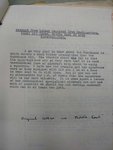Shortround6
Lieutenant General
The Lysander might have been a damed good liaison aircraft, but it wasn't a war winner in any sense of the word. Is was a covert aircraft, not a combat aircraft.
Sarcasm
There were 1786 built but only one squadron used them on covert missions into occupied Europe and even then that squadron was not exclusively equipped with Lyanders.
Large numbers wound up as target tugs.

